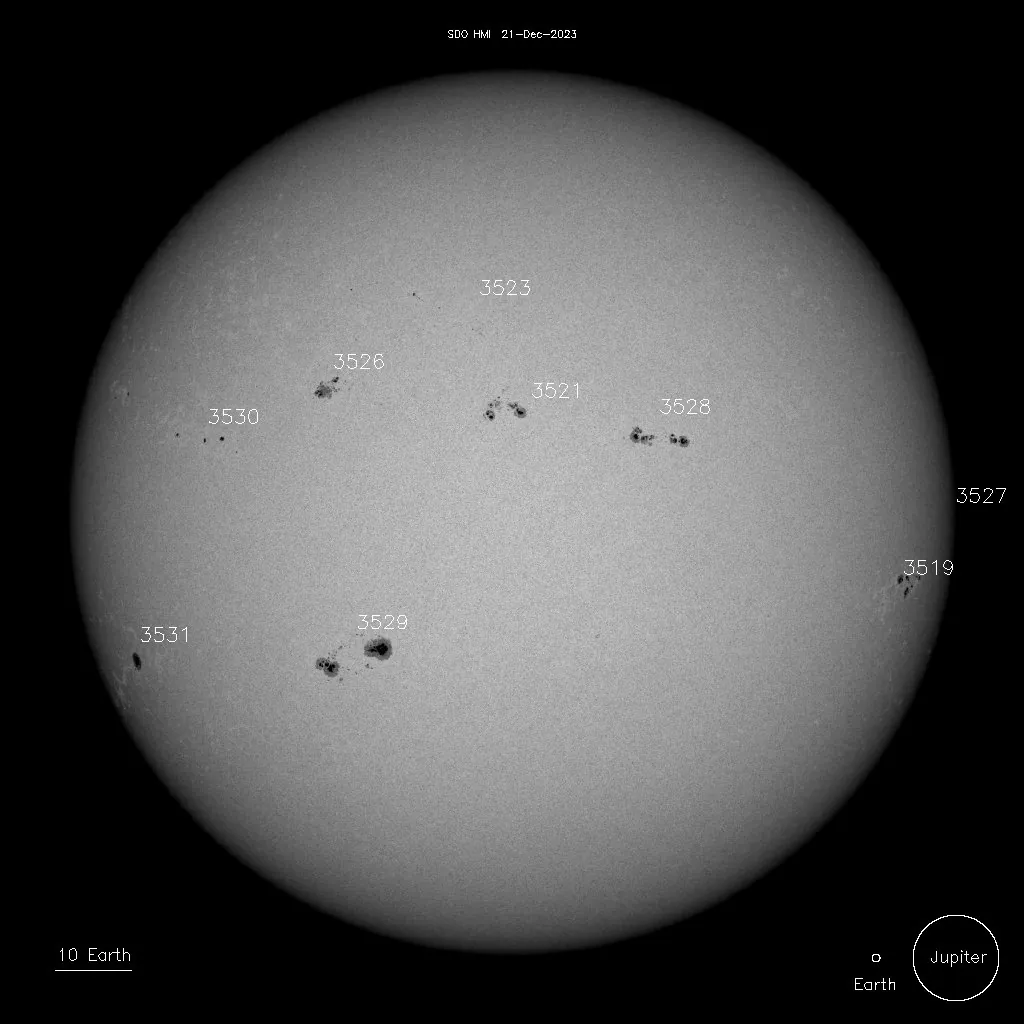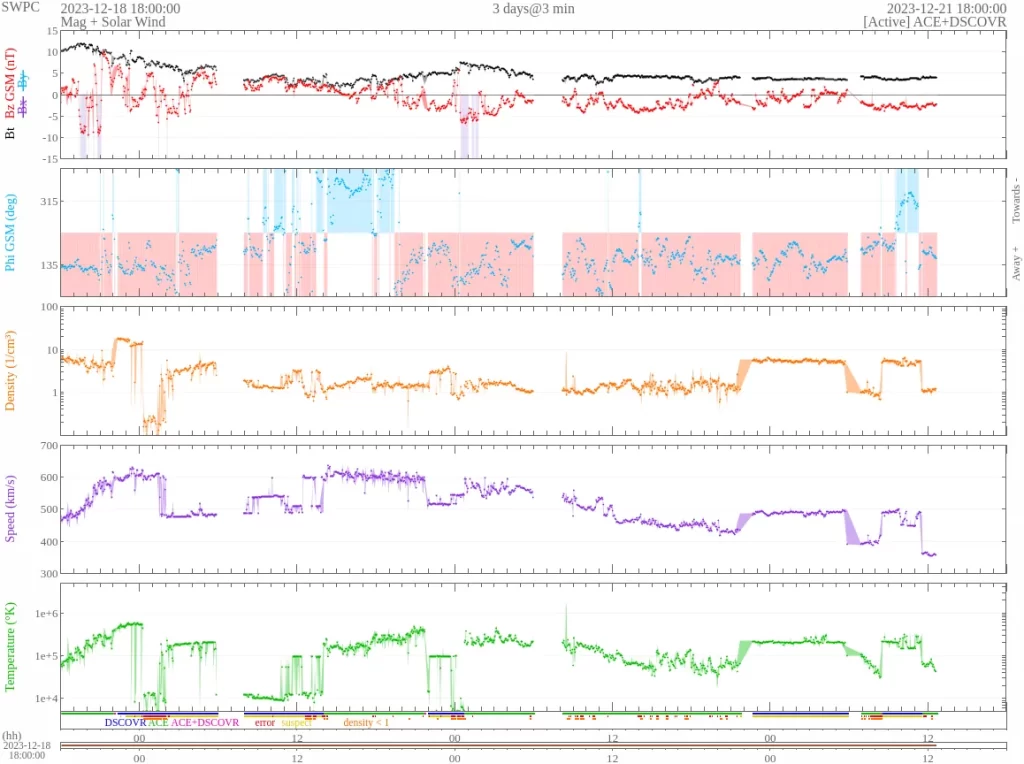A moderately strong solar flare measuring M4.2 erupted from Active Region 3519 at 05:38 UTC on December 21, 2023. The event started at 05:19 and ended at 05:49 UTC.
There were no radio signatures detected that would suggest a coronal mass ejection was produced. Even if it was, the location of this region does not favor Earth-directed CMEs.
This region appeared to develop a north/south magnetic configuration as it made its way to the west limb, with additional reorganization of its intermediate spots today.
Nearly all the active regions on the disk exhibited at least minor development and growth in 24 hours to 12:30 UTC today. Regions 3521 (N12W02, Dsi/beta), 3526 (N15E24, Cao/beta), 3528 (N08W22, Dai/beta), 3529 (S22E21, Dko/beta-gamma), and 3530 (N08E42, Dao/Beta-gamma) all contributed low- to mid-level C-class flares.

Two CMEs were observed in LASCO C2 imagery departing Earth near the west limb at around 21:24 UTC on December 20 and 03:36 UTC on December 21, respectively.
The first was deemed to be a miss well ahead of Earth. The initial look at the second CME also appears to be a miss, but a closer analysis will be conducted as additional imagery becomes available, SWPC forecasters said.
Solar activity is expected to be low, with a chance for isolated M-class flares through December 23.
The greater than 2 MeV electron flux was at normal to moderate levels over the past 24 hours, with a peak flux of 852 pfu at 19:55 UTC yesterday. The greater than 10 MeV proton flux was at background levels.
The greater than 2 MeV electron flux is expected to be at normal to moderate levels through December 23, with a chance for high levels on December 21 and 22 high speed stream influences. The greater than 10 MeV proton flux is expected to remain at background levels.
Solar wind parameters were indicative of a near-background solar wind environment over the past 24 hours. Total field values averaged near 4 nT, Bz was between +/- 4 nT, and solar wind speeds gradually decreased from ~480 km/s to ~350 km/s. Phi was predominantly positive, with an isolated rotation into a negative orientation near the end of the period.


Solar wind parameters are expected to continue a waning trend throughout December 21 and return to an ambient-like state by December 22. Weak enhancement from negative polarity coronal hole high speed stream (CH HSS) influences are anticipated to begin by early December 23.
The geomagnetic field was quiet to unsettled levels and is expected to remain at those levels on December 21 under weakening positive polarity CH HSS effects. Mostly quiet conditions are expected on December 22. Unsettled to active conditions are expected on December 23 due to negative polarity CH HSS effects.
References:
1 Forecast Discussion – Issued: 2023 Dec 21 1230 UTC – Prepared by the U.S. Dept. of Commerce, NOAA, Space Weather Prediction Center
Featured image credit: NASA SDO/AIA 304. Acquired at 05:37 UTC on December 21, 2023
If you value what we do here, create your ad-free account and support our journalism.
Major X2.8 solar flare erupts from Region 3514
Thursday, December 14, 2023
M5.8 solar flare and multiple CMEs, minor geomagnetic storms expected by December 16
Thursday, December 14, 2023
Impulsive M5.4 solar flare erupts from Region 3511, multiple filament eruptions
Saturday, December 9, 2023
Multiple CMEs heading toward Earth, G3 – Strong Geomagnetic Storm Watch in effect
Wednesday, November 29, 2023
M9.8 solar flare erupts from geoeffective Region 3500, Earth-directed CME likely
Tuesday, November 28, 2023
Large filament eruption produces partial-halo CME, impact to Earth expected on November 5
Saturday, November 4, 2023
Strong M8.7 solar flare erupts from Region 3435
Thursday, September 21, 2023